It became clear during 2020 pre-season testing in Barcelona that a strain of the contagious respiratory virus known as SARS-CoV-2 was likely to impact seriously on Formula 1. Spain was deemed a hotspot – as was Italy – and prevailing talk steadily diverted from front wings and tyre degradation to lockdowns and quarantines.
Although the world in general was thrown into turmoil – borders were progressively shut, travel increasingly banned and businesses forced into shutdowns – F1 inexplicably pressed ahead and travelled to Melbourne, only for a positive case of what had by them become known as Covid-19 to cause first the Australian Grand Prix, then a swathe of subsequent rounds, to be officially cancelled.F1 teams went into crisis mode, with the FIA immediately enforced factory shutdowns. During this period the sport’s processes were streamlined, plans hatched, policies and regulations rewritten, freezes introduced, F1’s overhaul of its technical rules delayed a year and a dynamic calendar constructed, one that ultimately delivered 17 races – five down from a scheduled 22 rounds – almost all of which were held behind closed doors.
True, there were a number of late reschedules and last-minute adaptations along the way, but F1 knuckled down superbly and ultimately salvaged its season, as Chloe Targett-Adams, F1’s director of race promotion, explained to RaceFans. This in the face of calls from F1’s previous masters Bernie Ecclestone and (ex-FIA president) Max Mosley to scrap the year totally to provide an element of certainty.

All would only become clear once full 2020 financial results were available, and here the British system is indispensable – the financial results of every one of the seven UK-registered entity are available. However, teams had minimal income during 2020’s first two quarters, so all hinged on the third and fourth quarters.
While the other jurisdictions in which the other three F1 teams are based – currently Switzerland (one) and Italy (two) – do not offer easily accessible reporting structures the overall effect on the respective teams is similar to comparable operations in the UK given that all were treated as equitably as possible under Covid.
Thus, local economic and social factors aside, the effects of Covid on Sauber, the Swiss team with an Alfa Romeo-branded F1 operation, are assumed to all intents similar to those on UK-based Williams, when expressed as percentages. That said, the various independent teams largely had a rougher ride as most only received the proportional slices of income, while the likes of Ferrari, Mercedes, Red Bull, McLaren and Williams received their various bonuses for the final time before F1’s new prize money structure arrived.
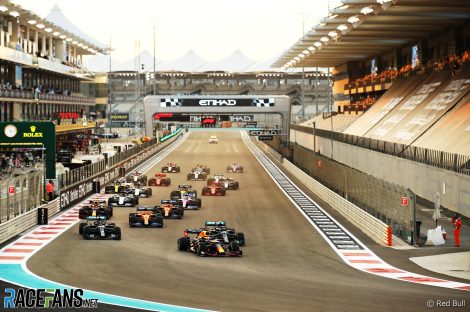
Liberty Media’s 2020 financial results are illuminating, for the commercial rights holder (CRH) carried by far the largest percentage losses, having gone all-out to ensure that the teams survived the crisis. One wonders whether predecessors CVC Capital Partners would have been similarly generous. Where Liberty in 2019 turned over a sliver over $2bn – itself 10% up on 2018 – revenues tumbled by 45% to $1.145bn last year.
However Liberty’s costs of sales – effectively money disbursed to teams as prizes and bonuses – dropped from $1.4bn (off a $2bn base) to $975m (off a $1.2bn base), a 31% decline, with the difference of 14% shouldered by Liberty. Thus, where the CRH suffered a modest $35m loss in 2019 – understandable given the investments it is making in the sport – for last year that grew to a whopping half billion dollars. Liberty took that on the chin.
Advert | Become a RaceFans supporter and
However, as a direct result of the reduced circumstances the teams received an average of 14% less than in 2019, which had been a record year in terms of team payments. The question is whether expenses were contained by the same amount or better. If so, happiness; if not, alarm…
By the same token, Formula One Management, the London-based F1 subsidiary responsible for providing support and technical services to the CRH which are in turn charged back to applicable group company, saw its revenues drop from £228m to £171m, a 25% tumble. FOM’s wage bill fell 25% from £60m in 2019 to £45m yet headcount grew from 506 to 529 (5%), demonstrating the effects of furloughs and months of lost working time.
The reduction in events obviously resulted in reduced costs across the board, for teams and F1, as did reductions in numbers of travelling staff, initially capped at 80 per team but progressively relaxed. However, the biggest savings were realised due to F1’s decision to delay introduction of its new technical regulations until 2022. The decision to roll over of 2020’s cars for a year with minimal updates allowed slashed development costs during the crisis.
Notably the teams all signed up to the 2021-2015 Concorde Agreement, suggesting they were comfortable with Liberty’s management of F1. That the sport was able to get through the year without losing a team attests both to its reliance and the effectiveness of its contingency planning.
How, then, did these revenue declines and various saving programmes affect the teams; which teams floated above Covid and which came to close to sinking?
Mercedes
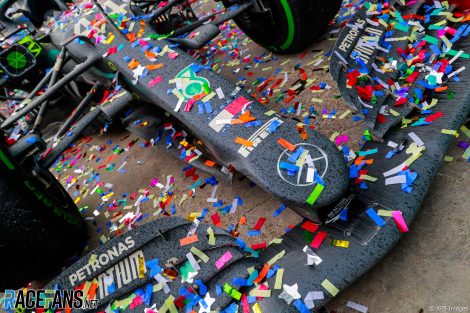
A note in the financials states that the highest paid director received remuneration of £6.9m, in line with 2019 levels.
The team’s accounts reflect unspecified sales of £10m, probably income from Racing Point (Aston Martin), to whom Mercedes supplies permissible components.
Although not a team, Mercedes F1 engine operation Mercedes-Benz High Performance Powertrains provides further pointers to F1’s health. The Brixworth-based company – at arm’s length from the F1 team to which it supplies power units, as it also does to Aston Martin, Williams, and from 2021 McLaren – posted turnover of £200m, around 30% of which was derived from F1 activities and the balance from ‘other’, including Formula E and Daimler projects.
This figure was £40m down on 2019, representing a 16% drop. Headcount, 85% of which is dedicated to F1, was 758, of which 121 performed other than production and technical functions. The total represents an increase 16 over 2019.
Advert | Become a RaceFans supporter and
Red Bull
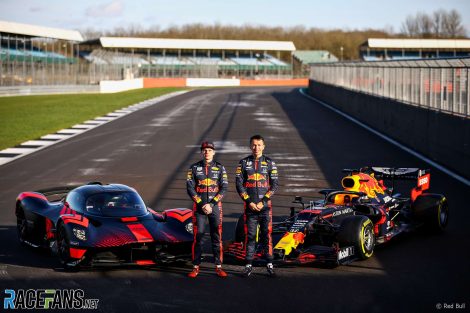
This, though, represents a $15m (6%) drop on 2019 although RBR recorded a profit of £9m, up from £8m. Another solid performance.
RBT registered revenues of £310m, mainly from sales to RBR, sister team AlphaTauri, income from Red Bull activities such as show cars and demonstrations, and the Aston Martin Valkyrie supercar project. Income was 7% down on 2019’s £337m, as was profit (£55m/£59m). After provisions for RBT ‘other’ activities the purified turnover is around £250m, covered mainly from RBR’s turnover.
As with Mercedes headcount increased from 866 to 934, with the latter complement made up of design (342), racing and production (417) and administration (175), proving for a combined RBR/RBT headcount of 993 – in line with that of arch-rival Mercedes.
McLaren
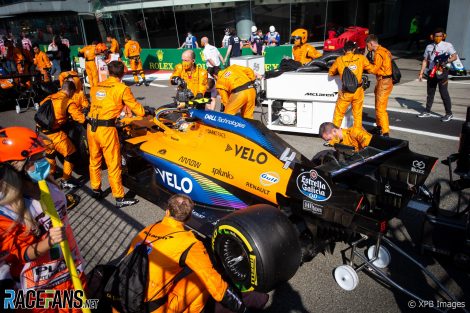
Purifying the numbers by removing heritage sales from both years casts a totally different light on McLaren’s performance: turnover drops to £160m versus last year’s purified £178m, a 12% drop which is roughly in line with the average. The reported loss without heritage income amounts to £36m, no change from 2019.
The team reported a 2021 headcount of 841 versus 826 – approximately the right size for the $145m budget cap. The wider group laid off 1,200 staff in May 2020, 70 of which were in McLaren Racing.
Racing Point (Aston Martin)

With no performance-related income to report during the first two quarters due to the effects of Covid, any financial reportage is skewed and not directly comparable with other British operations, and will remain so until the team operates to a more usual 1 January-31 December financial year.
That said, at the end of 2020 the team reported a headcount of 479, being 459 in various technical and racing departments and 20 in support functions. This is well up on the 407 of the previous year and points to Aston Martin’s considerable expansion plans.
Indeed, as reported here, the team intends raising a bond through the London Stock Exchange to fund its new technical campus. The prospective shows that the team is 57.4% owned by Lawrence Stroll, with a syndicate in which he is also believed to be a participant holding 37.01%, and management the remainder.
Renault (Alpine)
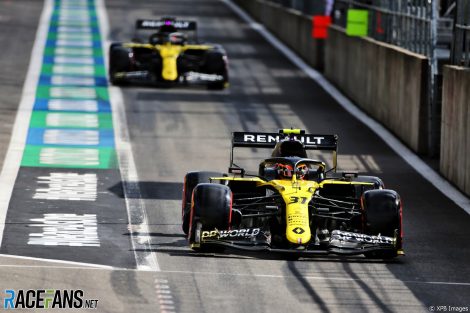
That said, given that the team is a wholly owned Renault subsidiary profits are dependent upon the level of support received from the parent company.
Headcount increased marginally, from 743 to 778 (5%), split between 391 in engineering, 237 in production and 150 in support services.
Haas
The team’s strategic report states that it relies on two unnamed major suppliers, a reference to the technical service and support it receives from Dallara and Ferrari. These supply the hardware as required, with Haas Formula effectively racing the cars and paying race team wages. Various other Haas group companies, mainly US- and Italy-based, cover other costs, so direct comparisons are not relevant save for a few pointers.
Turnover of the British operation was £80m, well down on 2019’s £112m although profit was static at around £8m, as were headcounts at around the 100 mark.
Williams
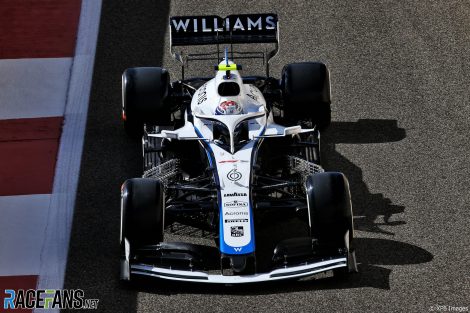
During the year under review headcount increased from 2019’s 644 to 675, a 5% increase.
Summary
F1’s inherent rude health was instrumental in enabling the sport to weather the Covid crisis, with Liberty’s commitment to the sport smoothing over the very rough patches. That said, arguably the biggest factor was F1’s decision to defer introduction of its ‘new era’ of car design by a year, freeze development and roll over the 2020 cars for a year with few updates permitted.

The biggest lesson was, though, that F1 could set aside its internal differences and pull together when the chips were down. F1’s comparatively healthy – given the prevailing crisis financial – numbers attest to that.
RacingLines
- The year of sprints, ‘the show’ – and rising stock: A political review of the 2021 F1 season
- The problems of perception the FIA must address after the Abu Dhabi row
- Why the budget cap could be F1’s next battleground between Mercedes and Red Bull
- Todt defied expectations as president – now he plans to “disappear” from FIA
- Sir Frank Williams: A personal appreciation of a true racer





Ciaran (@ciaran)
20th October 2021, 13:41
Good read. If teams could make any form of outright profit in 2020, it points to Liberty handling the pandemic very well. Although I would wonder if the $500m loss for Liberty is the primary driving force behind their push to monetise the sport harder – with sprint qualifying and the like.
HAL
20th October 2021, 18:41
Could be. The least you can say is that they managed the crisis wonderfully, given the circumstances.
Honestly, Bernie was all for money and with a very static / old fashion perspective of things. Liberty is all for money (like all companies today, mind you), but with a modern / pragmatic / “more agile” mindset. So, yes, LB is a “good thing”.
For the rest it’s good to know that F1 teams are all relatively healthy with positive figures. Not the same in every sport. Even though, from the figures, there’s no wonder why Haas is behind. Dzeej, it’s amazing there are clocking close to the other teams…
X1Znet (@x1znet)
20th October 2021, 14:58
Unless their policy has changed, Alpha Tauri publishes financials that follow UK rules due having some staff base in the UK if I recall correctly. I had found the last results put out as Torro Rosso — only catch is it’s in Italian.
Jose Silva
21st October 2021, 9:32
It’s a good article to remind us that, indeed, Liberty and F1 strived very well amid a very difficult circumstance. And let’s hope, indeed, that the sport might be able to show those degrees of flexibility and common sense in the future.